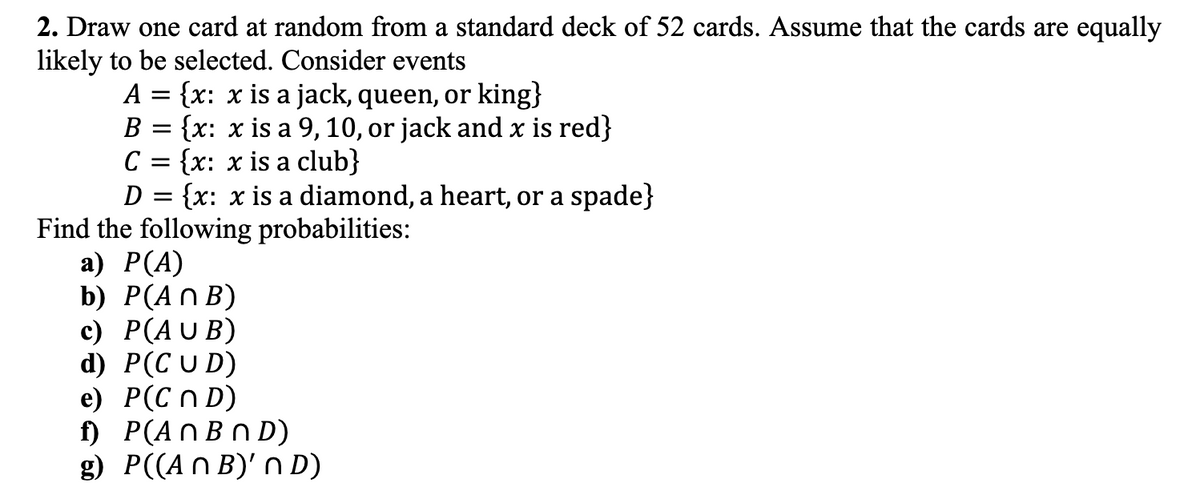2. Draw one card at random from a standard deck of 52 cards. Assume that the cards are equally likely to be selected. Consider events A = {x: x is a jack, queen, or king} B = {x: x is a 9, 10, or jack and x is red} C = {x: x is a club} D = {x: x is a diamond, a heart, or a spade} Find the following probabilities: a) P(A) b) P(ANB) c) P(AUB) d) P(CUD) e) P(CND) f) P(An BND) g) P((An B)'n D)
2. Draw one card at random from a standard deck of 52 cards. Assume that the cards are equally likely to be selected. Consider events A = {x: x is a jack, queen, or king} B = {x: x is a 9, 10, or jack and x is red} C = {x: x is a club} D = {x: x is a diamond, a heart, or a spade} Find the following probabilities: a) P(A) b) P(ANB) c) P(AUB) d) P(CUD) e) P(CND) f) P(An BND) g) P((An B)'n D)
Chapter8: Sequences, Series,and Probability
Section8.7: Probability
Problem 4ECP: Show that the probability of drawing a club at random from a standard deck of 52 playing cards is...
Related questions
Question
Please solve f and g

Transcribed Image Text:2. Draw one card at random from a standard deck of 52 cards. Assume that the cards are equally
likely to be selected. Consider events
A = {x: x is a jack, queen, or king}
B {x: x is a 9, 10, or jack and x is red}
с = {x: x is a club}
D = {x: x is a diamond, a heart, or a spade}
Find the following probabilities:
a) P(A)
b) P(ANB)
c) P(AUB)
d) P(CUD)
e) P(CND)
f) P(An BND)
g) P((An B)' ND)
Expert Solution
This question has been solved!
Explore an expertly crafted, step-by-step solution for a thorough understanding of key concepts.
This is a popular solution!
Trending now
This is a popular solution!
Step by step
Solved in 3 steps with 1 images

Recommended textbooks for you

